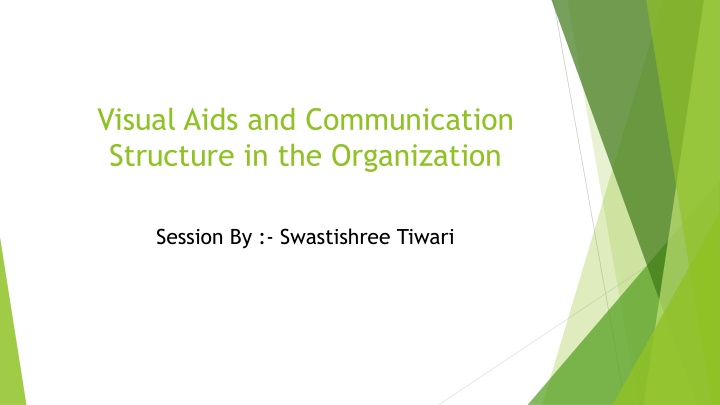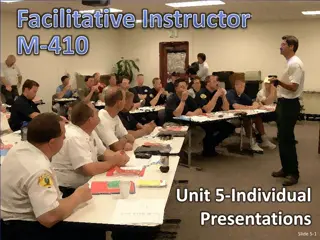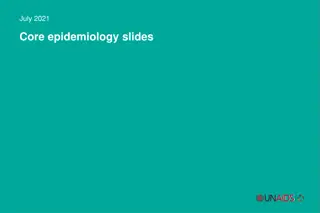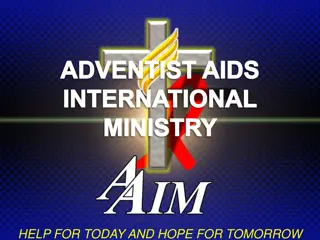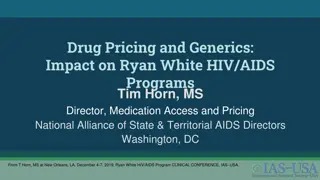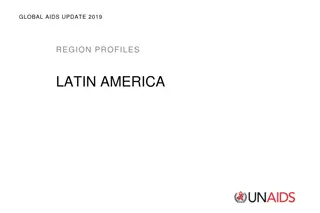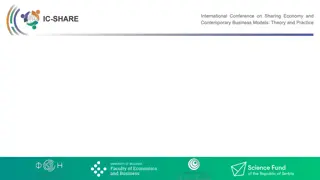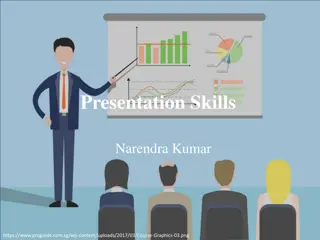Effective Visual Aids in Presentations
Visual aids play a crucial role in enhancing communication and engagement during presentations. They can provide clarity, aid memory retention, and make the content more engaging for the audience. This guide covers the definition of visual aids, examples, importance, guidelines for presenting them effectively, tips on creating engaging visual aids, and top things to avoid when using visual aids in presentations.
Download Presentation

Please find below an Image/Link to download the presentation.
The content on the website is provided AS IS for your information and personal use only. It may not be sold, licensed, or shared on other websites without obtaining consent from the author.If you encounter any issues during the download, it is possible that the publisher has removed the file from their server.
You are allowed to download the files provided on this website for personal or commercial use, subject to the condition that they are used lawfully. All files are the property of their respective owners.
The content on the website is provided AS IS for your information and personal use only. It may not be sold, licensed, or shared on other websites without obtaining consent from the author.
E N D
Presentation Transcript
Visual Aids and Communication Structure in the Organization Session By :- Swastishree Tiwari
What is a Visual aid? Any slideshow, background, prop, costuming or other intentional object used to help the audience focus, understand or engage. Merrium-Webster: Something you look at (such as a Chart or Film) that is used to make something easier to understand. Note: In both of these definitions, you are NOT limited to posters and PowerPoints!
Examples of Visual Aids Tri-fold poster Flip Charts Flat Posters PowerPoint or Slideshows Props or Objects Charts & Data Brochures Video & Audio Clips People / Costumes
An Effective Visual Aid Provides Clarity Enhances memory value Meets audience expectations Adds variety
Importance of Visual Aids Make a presentation entertaining, Help the presenter to stick to the intended plan, Enhance understanding and support claims Organize and demonstrate presentation Speed comprehension and add interest
Guidelines for presenting Visual Aids Avoid using the Chalkboard Display aids where audience can see them Avoid passing items around Display aids only when discussing them Talk to audience, not to Visual aid Explain at Visual aids PRACTICE with Visual aids
Tips on creating Visual Aids Start with an outline of the goal Keep visual aids BRIEF Do not read AV directly (what you say vs. AV) Ask audience to Read or Listen, not both
Top 3 things to avoid Too much text, including outlining / bullet points- it s a sign that the slide is doing the work FOR you. Relying on the screen (or reading directly off of it instead of speaking to the crowd) Distracting, flashing or illegible designs
Communication Structure Organizational communication structure looks at the pathways in a message system to see where interactions happen and who talks to whom. A formal communication system exists which uses official channels to give messages between organizational positions.
Chain Communication Structure CHAINCOMMUNICATIONSTRUCTURE The "chain" or "line" communication structure involves direct lines of communication between members of each rank directly above and below the message's origin point, but not with members on any other point in the chain. For instance, a department head can communicate directly with the vice president directly above him or the manager directly below him but not with the line worker several steps below him or the company president several steps above him. The advantage of this structure is that it provides clear accountability, in the sense that everyone knows where an instruction or decision originated.
Circle Communication Structure The "circle" structure resembles the chain structure, in that each link only connects to the two links on either side. The difference is that two links in the chain "close" to form the circle. The circle structure is less concerned with hierarchy than the chain structure, so the circle does not have the authoritarian weight found in the chain. However, the lack of a clear authority can lead to inefficiencies, such as a reduction in clarity as the message gets passed around the circle.
Star Communication Structure In the "star" structure, communications revolve around a central point. Each participant in the outer branches of the star communicates her message to a central authority, who then distributes the message to the other participants. For instance, a sales representative will communicate a customer's wishes to the sales manager, who will then pass on the message to the rest of the sales staff. While the star structure maintains the clarity of the message by requiring that the message goes through a central point, it can inhibit the participants from communicating such important messages directly with each other.
All Channel Communication Structure The "all-channel" communication structure blends the features of the circle and the star structures. The all-channel structure allows each participant to communicate directly with every other participant. This structure is highly effective for accomplishing complex tasks, as it allows all participants the opportunity to contribute to solving the problem. However, the lack of a central authority can lead to communication overload and can slow decision-making.
Formal Network Structure Formal communication networks is an arrangement of interconnected people and processes through formal lines of communication and flow of information. Wheel Network: communication network wherein all the information flows from one central person, typically the leader. The other members have little or no communication link with each other. Here, the leader deliberately controls the line of communication and make sure that the information reaches all in the group. This is the most centralized forms of a
Formal Network Chain Network: Under the chain pattern, the information flows either up or down the line. Here each person gets the information from his immediate superior and then passes it to their immediate subordinates. Likewise, the chain gets created, and all members get connected to a single person, typically the leader. This network is suitable when the information to be passed is legally correct. Circle Network: The circle network is one of the decentralized forms of a communication network wherein the information is shared equally among all the members. Here each person gives and receives information from two or more persons in the network. Under this pattern, each member has the equal chance to participate.
Free Flow Network: Under this pattern, everyone is connected to each other, and the information can flow freely from anywhere in the organization. It is the most decentralized form of formal communication. The distinct feature of this communication pattern is that all the persons in the group are linked to each other and can freely communicate with anyone they want.
Informal Network The Informal Channel Network or Grapevine Network shows the pattern of the communication, i.e. how the informal communication passes from person to person. Single Strand Network: Under this communication pattern, the information flows from one person to the next person in the network. Such as, one person will give information to another person who will communicate it to the next person and similarly the third person will also communicate the same message to the next person in the network and so on. This type of chain is less reliable and accurate to pass on the message. Here, the communication process is linear. Gossip Chain Network: In the gossip chain network, there is an individual who tells the message to all other members in the network directly. He is generally the central person who seeks out and transmit information to all that he has obtained. Here, every person in the network communicates with each other informally. This network is often used when the subject matter is unrelated to the nature of the job.
Probability Chain Network: Under this communication pattern the information passes randomly from persons to persons. Such as, there is an individual who acts as a source of message selects any person randomly in his network to communicate the message. That second person will again, select another person randomly and passes on the message to him, likewise the communication flows to different people chosen randomly. Here, the source of information for each member of the network is different. This communication pattern is used when the information is interesting, but not significant. Cluster Chain Network: In the cluster chain network, there is an individual who, acts as a source of a message, transmits information to the pre-selected group of individuals out of whom few individuals again tell the same message to other selected group of individuals. Likewise, the chain continues, and the message reaches to all in the network.This pattern is similar to the telephone tree, wherein one person calls other two persons, then these two persons call other three persons and again these three persons are expected to call other three persons. Likewise, the information gets transmitted to all persons connected to the telephone network. This is the most common form of informal communication network.
